Welsh monastery with controversial history for sale for £1.5 million
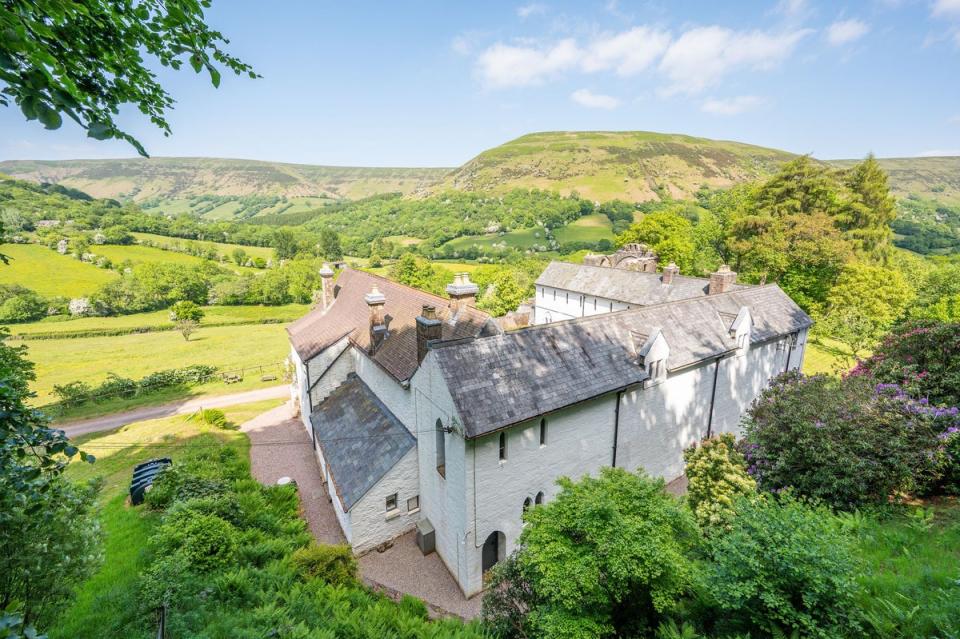
In the rolling green hills of Monmouthshire, close to the market town of Abergavenny, lies a whitewashed stone monastery, built in the 19th century. This is Capel-y-Ffin Monastery, set around a square central courtyard and surrounded by eight acres of gardens and grounds. Outside, there is a white statue of the Virgin Mary and the stone ruins of a former church, now part of the greenery.
If you’ve ever dreamed of enjoying the tranquillity of a monastery —without the commitment to a monastic lifestyle— this is your chance. Capel-y-Ffin has been listed for sale with Fine & Country for £1.5million.
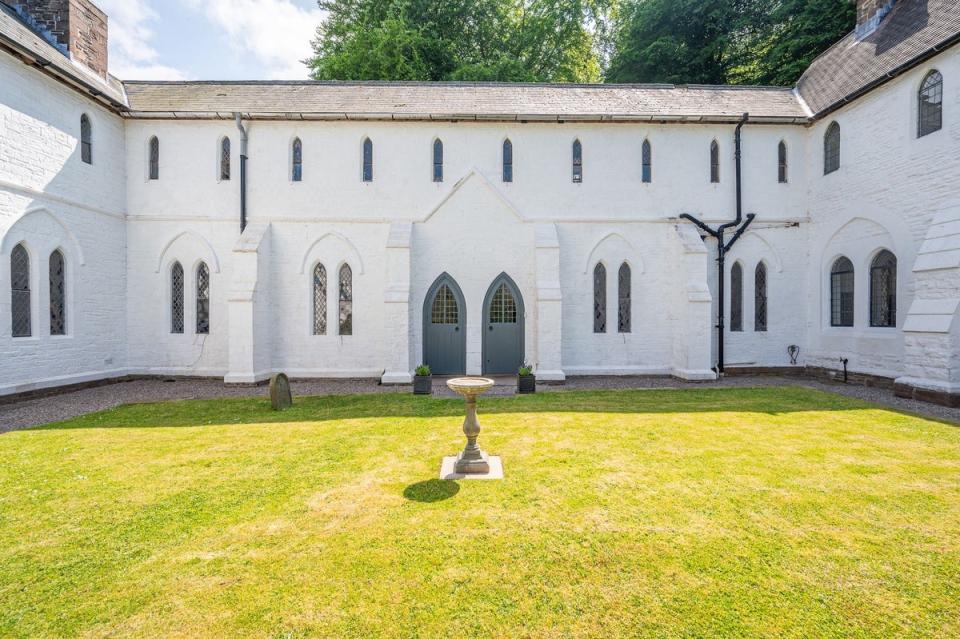
The monastery, now Grade II-listed, was designed by Charles Buckeridge, a Gothic revival architect who trained under Sir George Gilbert Scott. It was built in 1870 by Joseph Leycester Lyne, known as Father Ignatius, a Church of England monk and preacher who unsuccessfully tried to reintroduce the monastic tradition back into the Anglican church.
Capel-y-Ffin (“the chapel of the end”) was a functioning monastery for over 40 years. After Lyne’s death in 1908, it passed to two other monastic communities, before it was bought in 1924 by Eric Gill, the controversial sculptor, letter cutter and designer of the Gill Sans and Perpetua typefaces, who was later discovered to have sexually abused members of his family.
Gill intended to set up a Roman Catholic community in the then-disused Capel-Y-Ffin Monastery. “Capel-Y-Ffin’s the name and just describes it, 2,000 feet of mountain wall on both sides and to the north of it – no outlet but to the south,” he wrote in a letter about his plans to buy the monastery. “Sheep run on mountains and stone galore, both for carving and building, no extra charge.”
Gill’s regular visitors included the artist Edgar Holloway, and poet, artist and Catholic priest, Desmond Chute. David Jones, the painter and modernist poet, found inspiration in Capel-Y-Ffin and the surrounding Black Mountains, describing his time there as “a new beginning” for his work.
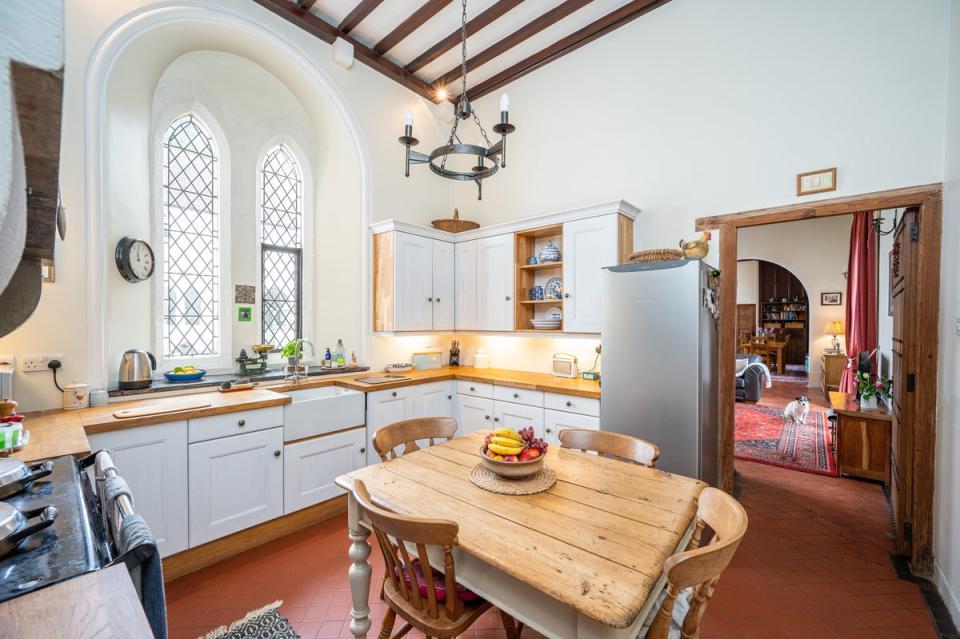
Gill and his family moved to High Wycombe after four years, although he continued to visit until his death in 1940. It became a school, run by Gill’s daughter, and later a guest house —both without much success— before becoming a family home.
The current owners bought the property in 1985, having acquired it from their parents. The couple used Capel-Y-Ffin as a family home, renovating the property to its current condition and letting out parts of the 7,807 square foot property as self-contained holiday rentals.
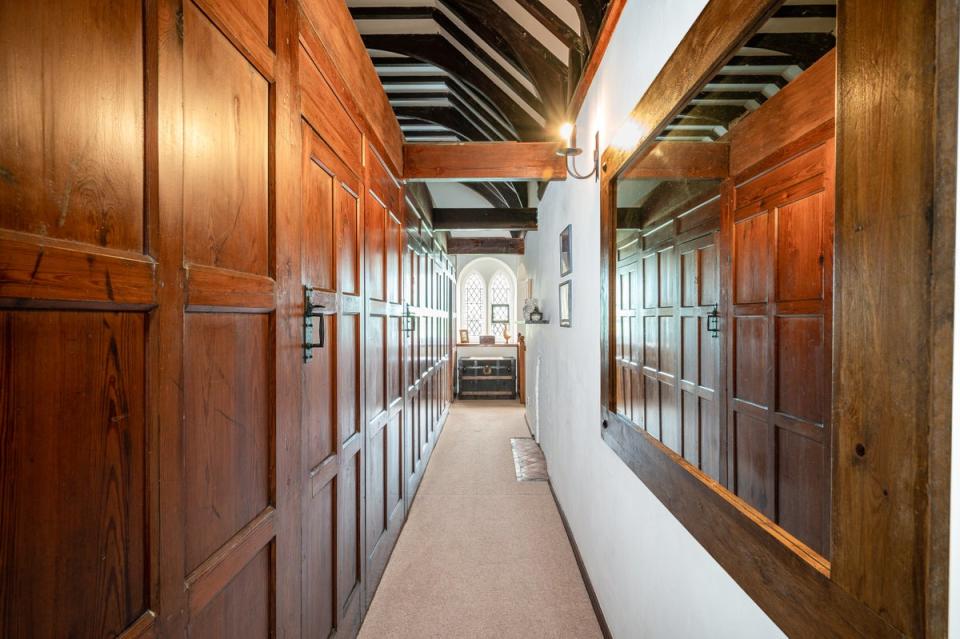
Arranged over three floors, there are 14 bedrooms, five bathrooms and five reception rooms. There are three rental apartments, each with their own kitchen and reception spaces, and able to sleep up to 14 people.
Upstairs, down a wood-panelled hallway, are most of the property’s bedrooms, with arched Gothic windows and wooden rafters. On the ground floor, there is a chapel, and long dining and reception rooms with dramatic entrance arches leading to the courtyard outside. “If the sun’s right when you go out that door, it’s wonderful,” says Fine & Country agent Ben Watkins.
The lower ground floor offers more self-catered accommodation, a large utility room and a carport.
“On a very sunny day, the approach up the drive is quite prolific. The way property comes at you is quite imposing, in a nice way, but you’ve got a fantastic view to the left of the mountains,” says Watkins. “If the weather’s right, it’s idyllic – a term that’s used far too much, but it does fit it.”
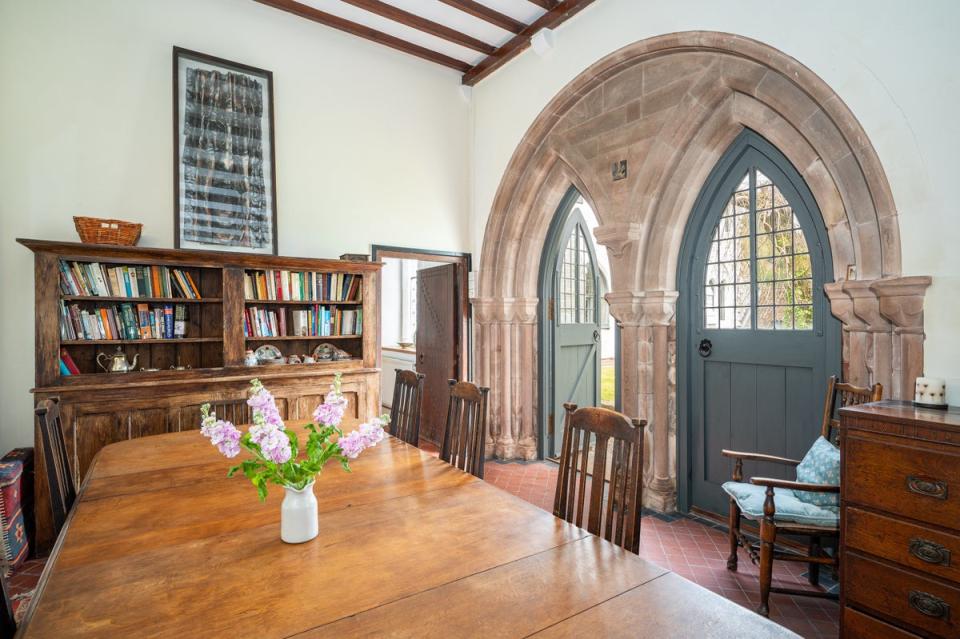
Now, after almost 40 years at their unique home, Capel-Y-Ffin’s owners are looking to downsize. “It’s a lot of property for two people,” says Watkins, who says that this is the first monastery that the office has listed.
It’s had monks, artists and poets as residents – but what kind of buyer is likely to take on the monastery next? “One of two groups: either a big, multi-generational family —someone looking for that rural, idyllic lifestyle and putting two funds together to take it on— or someone wanting to turn it into an events venue,” says Watkins.
So far, Capel-Y-Ffin has attracted international interest and a number of viewings. Watkins has had prospective buyers considering the monastery as a place to hold Pilates, walking and outdoor retreats, due to its location in the Brecon Beacons National Park, and believes it could continue to be used as holiday lets, or as a wedding venue.
“It needs the right kind of buyer,” says Watkins. “I think as long as somebody is able to take it on and look after it, the owners would be happy with that.”

 Yahoo Finance
Yahoo Finance 